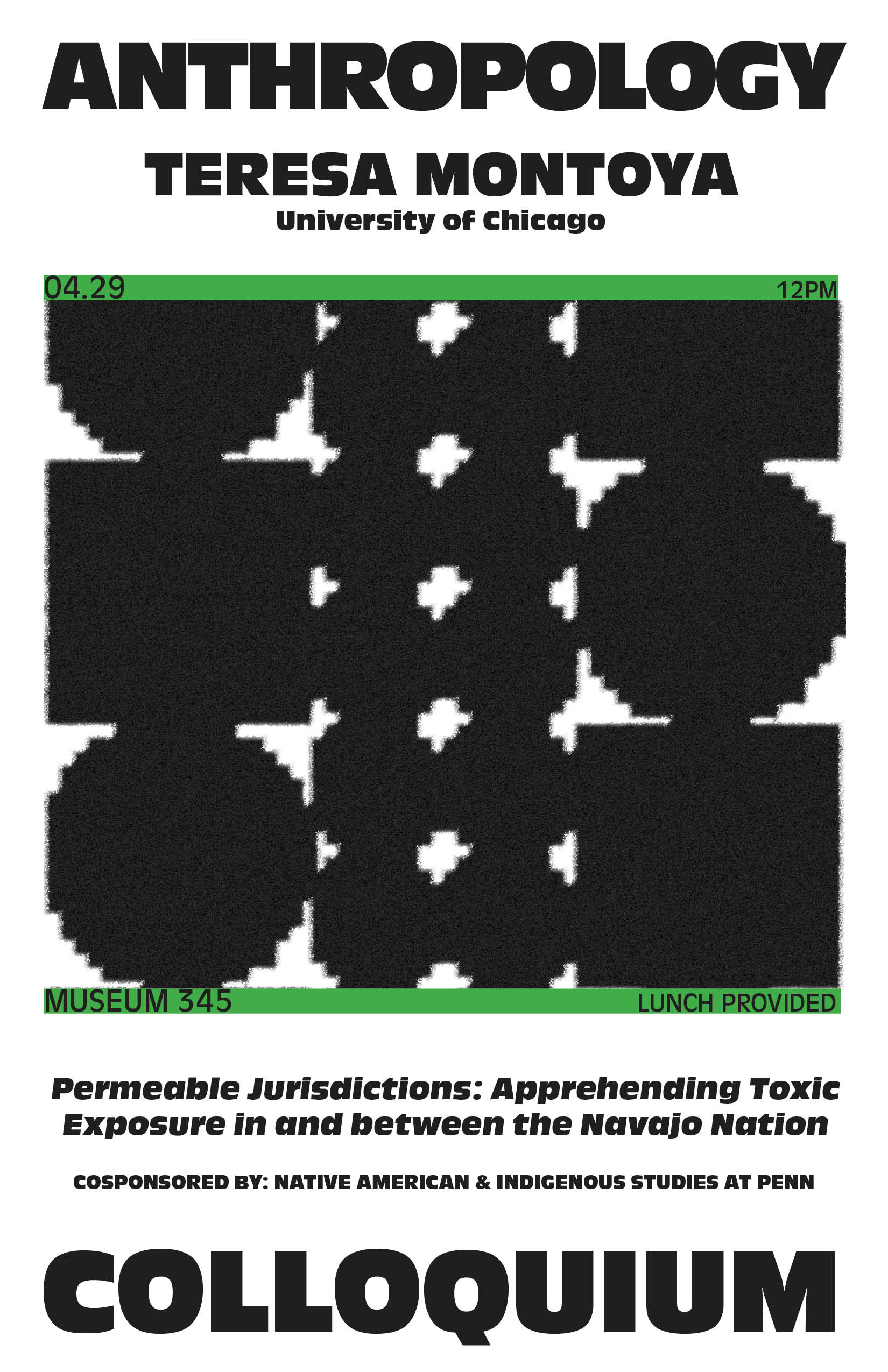Penn Museum 345

In the 20th century, the Navajo Nation was the site of the largest production of domestic uranium ore to fuel the burgeoning military-industrial complex in the United States. As a consequence of this violent development, there remain over 500 abandoned uranium mines across Diné homelands. Though the Navajo Nation has since issued a moratorium on uranium mining on its sovereign lands, the legacy of these extractive practices remains in the form of toxic contamination of its land and water. The ability of the Navajo Nation to protect Diné citizens from continued exposure, however, is limited by its lack of jurisdiction across discontinuous non-Native land parcels that exist within the geographic boundaries of the reservation. Large areas of the Navajo Nation are so-called “checkerboard” lands, owing to disastrous 19th-century federal land allotment programs. This talk interrogates settler colonial land policy and toxic violence through the analytic of “permeability” to theorize the ongoing challenges—and possibilities—for environmental regulation and political mobilization on Indigenous lands today.

 Department of Anthropology
Department of Anthropology